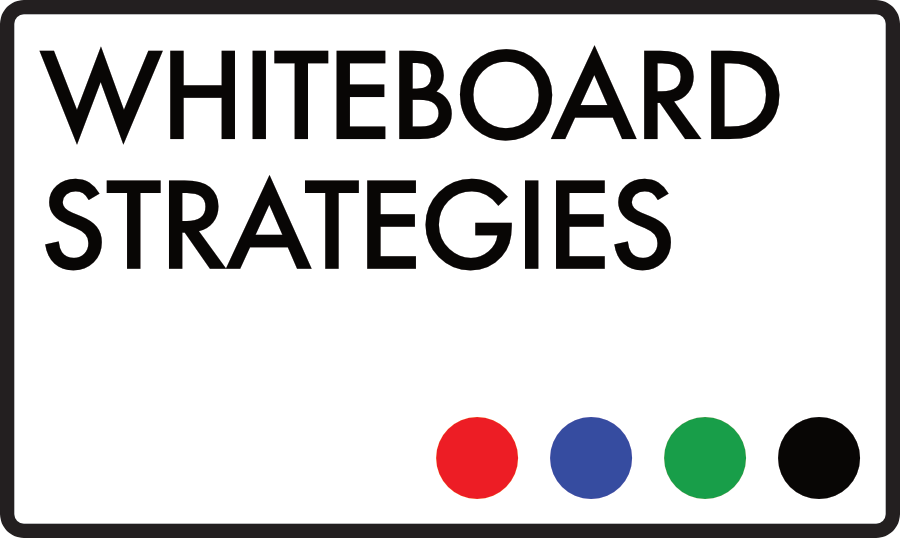“We Have Met the Enemy and He is PowerPoint”
NY Times Headline, 2010
An article I read this week told me that the “NASA report on the 2003 crash of the Columbia space shuttle indicated engineers had become too reliant on presenting complex information in jumbled slides, making it difficult to assess risks associated with the mission”, and stated that “It is easy to understand how a senior manager might read this PowerPoint slide and not realize that it addresses a life-threatening situation”. The highlights are mine, but the point is clear.
That’s how much attention senior management at the planet’s leading space agency – the finest physicists, engineers and analysts in the world – pay to PowerPoint when actual lives are on the line… So how do you think your customers, investors and stakeholders are going to get on?
In 1999, at the height of the Kosovo war, CIA analysts were gathering intelligence for NATO regarding possible targets for air strikes. They focused on a weapons factory that the Serbian government were running in Belgrade. A PowerPoint slide of this intelligence was shared across NATO and within the US intelligence services. Get this though – the slide in question used the same template as US military command for the Serbian campaign. Somewhere in the chain of command, this intelligence was mistaken for an order, and the target was bombed.
Except the target wasn’t an arms factory, it was the Chinese embassy. Innocent people died, a major diplomatic incident unfolded, waves of anti-US protests erupted across China.
That’s how much attention highly trained, keenly focused and minutely vetted analysts the length and breadth of US military command pay to PowerPoint when actual lives are on the line… So how do you think your customers, investors and stakeholders are going to get on?
These tragic mistakes are indicative of what people in offices worldwide already know – PowerPoint is a disaster waiting to happen. It isn’t an engagement tool, it’s a crutch. It doesn’t aid learning or communication – if anything it’s used by presenters to avoid having to make a genuine connection with their audience. As Amazon CEO Jeff Bezos says, PowerPoint presentations are “easy for the presenter, but difficult for the audience”.
And it’s the audience we need to think about here, because the person giving the presentation (or the person reading word for word off their over-packed PowerPoint slides…) already knows the information. They’ve researched it, they’ve sat and typed it out. But the person watching the presentation – that’s the person who needs to know, and PowerPoint isn’t aiding that information transfer at all.
In fact, a 2009 educational study by Savoy, Proctor, & Salvendy showed that students understand and retain around 15% less information from a PowerPoint-assisted lecture than from the traditional ‘chalk-and-talk’ equivalent. 15% less! Students who didn’t attend the lectures at all but sat at home and read the relevant bit of their textbooks understood and retained more relevant information that those who attended the PowerPoint lecture. That’s how much PowerPoint doesn’t help. As General James Mattis, the retired US Joint Forces Commander once neatly put it, “PowerPoint makes us stupid”.
That means it’s not helping sales people sell, not helping trainers train, not helping marketing people market, not helping directors to direct. It’s not helping. Full stop.
So why does thinkoutsidetheslide.com report that over 26% of office workers are sitting through at least one PowerPoint presentation a day (up 100% since 2007, by the way)? That’s a rhetorical question, really, but one that Jeff Bezos has already answered above. Lazy presenters, unimaginative enablement teams, trainers stuck in the 90s.
Visual comms are hugely important, can unlock incredible potential across your organisation, and lead to exponential growth in your bottom line… but only if you’re using the right resources in the right way. PowerPoint has become the opposite of what it was intended to be – a piece of software that clouds presentations, makes presenters lazy, confuses their audience and leads to worse information retention, worse decisions, worse results. That’s a disaster. Amazon, Linkedin, GlaxoSmithKline, massive areas of the US military, and many other industry-leading organisations have already banned PowerPoint altogether – isn’t it time you did the same?
PowerPoint is a dead horse that is flogged every day in offices around the world. If you’re interested in truly harnessing the potential of visual comms in a way that encourages genuine engagement, mastery of the subject, easy and effective information transfer and offers demonstrable and impressive ROI… well, that’s what I’m passionate about – and that’s what I do. Let’s talk.

Recent Comments